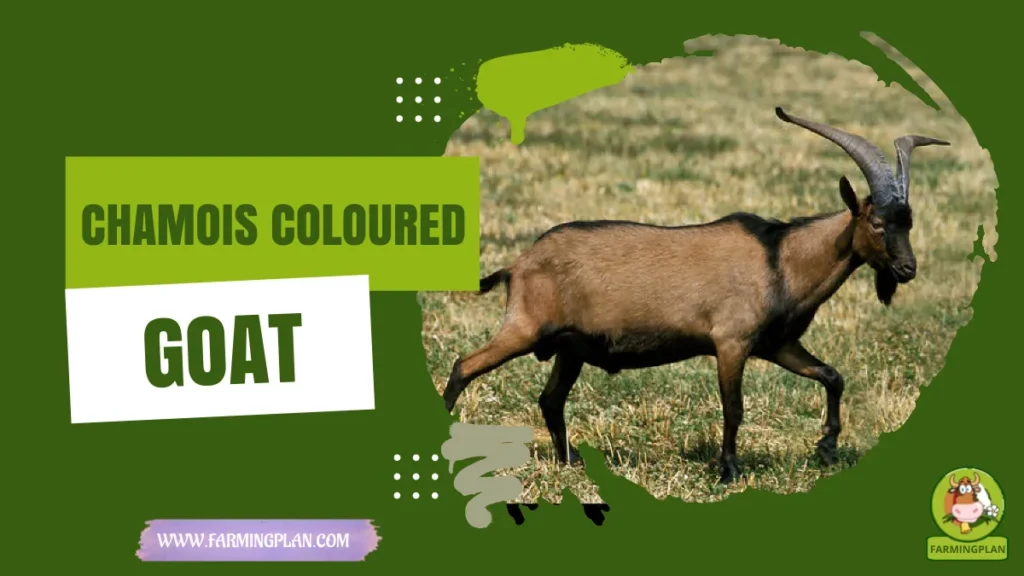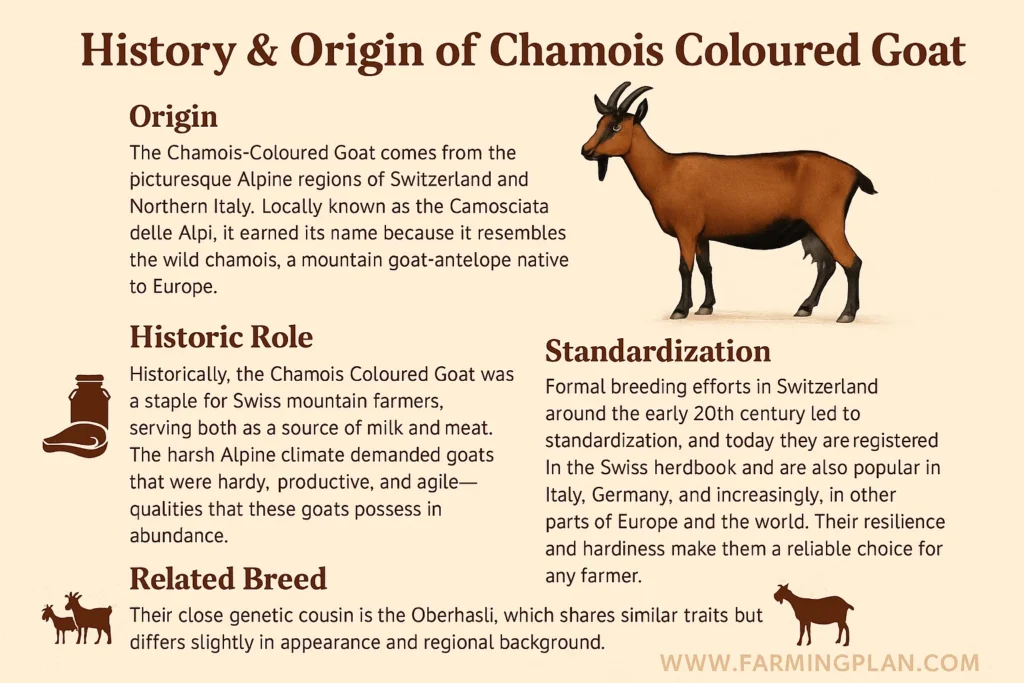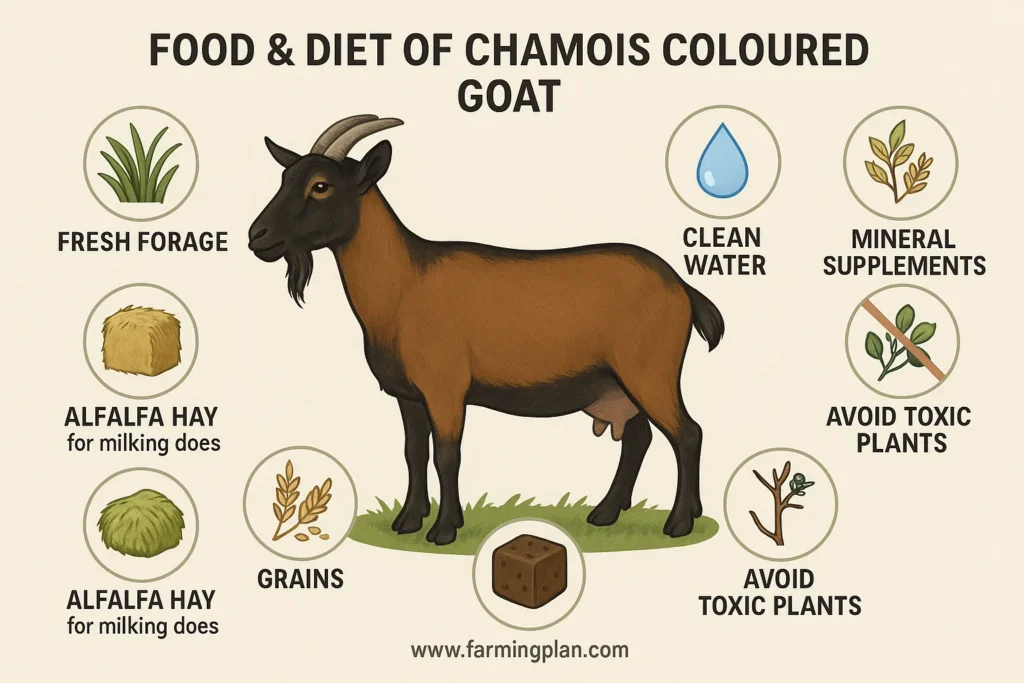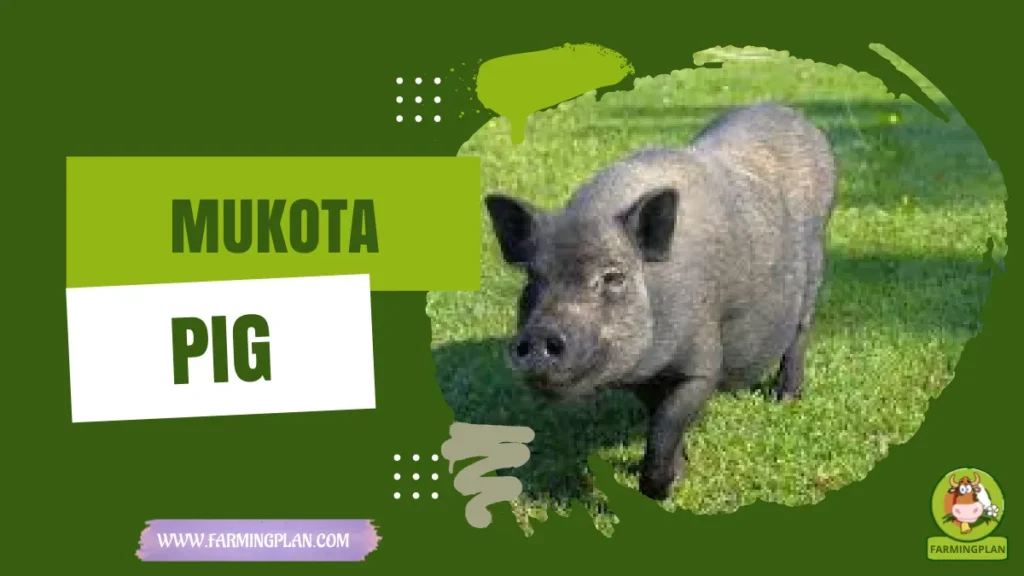If you’re in search of a breed that is not only smart, beautiful, and productive but also remarkably adaptable, the Chamois Coloured Goat is an excellent choice. Renowned for its unique coat and robust milk production, this breed—also known as Camosciata delle Alpi—is a favorite among farmers, breeders, and pet owners in Europe and beyond. Hailing from the Swiss and Italian Alps, the Chamois Coloured Goat seamlessly combines striking aesthetics with practicality. It’s one of my top picks for a dual-purpose goat on the farm, thanks to its adaptability, gentle nature, and strong genetic traits. Whether you’re a novice or an experienced goat herder, this breed is a perfect fit.

History & Origin of Chamois Coloured Goat
The Chamois-Coloured Goat comes from the picturesque Alpine regions of Switzerland and Northern Italy. Locally known as the Camosciata delle Alpi, it earned its name because it resembles the wild chamois, a mountain goat-antelope native to Europe.
Historically, the Chamois Coloured Goat was a staple for Swiss mountain farmers, serving both as a source of milk and meat. The harsh Alpine climate demanded goats that were hardy, productive, and agile-qualities that these goats possess in abundance.

Formal breeding efforts in Switzerland around the early 20th century led to standardization, and today, they are registered in the Swiss herdbook and are also popular in Italy, Germany, and increasingly, in other parts of Europe and the world. Their resilience and hardiness make them a reliable choice for any farmer. Their close genetic cousin is the Oberhasli, which shares similar traits but differs slightly in appearance and regional background. Both are descendants of Alpine landrace goats.
Read More: Abacot Ranger Duck: Resilient Beauty for Every Farm
Characteristics of Chamois Coloured Goat
Chamois Coloured Goats are visually striking. Their coats come in rich shades—ranging from light brown to dark chocolate, often with distinct black dorsal and facial stripes. This “chamoise pattern” includes black legs and underbelly, and in hornless types, a sleeker silhouette. Males tend to be darker and heavier in build. They have a straight profile, alert ears, and expressive eyes. Some goats may show white hairs or frosting on the ears and muzzle.
Wattles may or may not be present. Adult females weigh about 50–60 kg, and males up to 90 kg. Their sturdy legs and well-muscled frame make them ideal for mountainous terrain. There are horned and hornless types, with the hornless variety being preferred in some farming setups. These goats have an average height of 70–85 cm and mature quickly—often reaching breeding age at 6–8 months.
Nature & Temperament of Chamois Coloured Goat
One of the reasons I recommend the Chamois Coloured Goat to beginners is because of their personality. These goats are friendly, intelligent, and easy to manage. They respond well to gentle handling and can bond closely with their keepers. They are not aggressive, and their calm nature makes them great for mixed herds or as pet goats.
I’ve found them especially good with children on family farms. They’re curious and will often follow you around the pasture or lean in for a head scratch. Despite their calm demeanour, they are alert and agile. Their natural instinct makes them good at avoiding predators. When housed in good conditions with enough stimulation, they’re content and low-stress animals to keep.
Food & Diet of Chamois Coloured Goat
To keep your Chamois Coloured Goat healthy and productive, you need to offer a balanced diet. They thrive on a mix of fresh forage, quality hay, grains, and mineral supplements. Alfalfa hay works wonders for milking does. Clean, fresh water must be available at all times—especially for lactating females. I also offer my goats a loose mineral mix to prevent deficiencies.

During the dry season, adding molasses blocks helps keep their energy up. Avoid toxic plants, mouldy hay, or stale grains. Goats love to nibble on shrubs and tree bark, so make sure their enclosure is free of dangerous greenery. Always monitor body condition and adjust feed as needed, especially during pregnancy or lactation.
Usage & Purpose
These goats are excellent milk producers, making them perfect for small-scale dairies. On average, a Chamois Coloured doe can give around 600–900 litres of milk per lactation, with about 3.5% fat content. The milk is creamy, fresh, and ideal for cheese or yogurt.
Besides milk, they’re also raised for meat, especially the young bucks. Their fast growth and muscular build make them suitable for meat production. In some regions, they’re used for conservation grazing in mountainous areas to manage grasslands naturally. They also shine in goat shows thanks to their distinct appearance. As pets, they’re loyal, engaging, and easy to train.
“A Goat With Style And Stamina—The Chamois Coloured Goat Delivers Beauty And Bounty.”
Special Features of Chamois Coloured Goat
The distinct chamoise coat pattern is one of the most beautiful in the goat world. But it’s not just looks—these goats have strong Alpine genetics, giving them high disease resistance and resilience in cold, wet climates. Their dual-purpose nature, early maturity, and friendly temperament make them a great choice for hobby farms.
They also have dominant traits for color and build, so breeding programs often use them to improve other lines. Some may also have unique eye colors, frosting, or horn shapes, making each goat slightly different. Their milk quality and quantity make them comparable to top dairy breeds like Saanens or Alpines.
Read More: Classifications of Poultry: Proven Strategies for Successful Farming
Health Issues & Prevention of Chamois Coloured Goat
Chamois Coloured Goats are hardy, but they’re not immune. Keep an eye out for common goat ailments like:
- Internal parasites (worms)
- Foot rot
- Mastitis in dairy does
- Pneumonia in cold, damp weather
- Mineral deficiencies (selenium, copper)
Prevention Tips:
- Deworm on schedule and rotate pastures
- Keep shelters clean and dry
- Trim hooves every 4–6 weeks
- Provide loose minerals and clean water
- Vaccinate for CDT (Clostridium and Tetanus)
If a goat shows signs of illness—loss of appetite, limping, or unusual behaviour—call your vet early. Healthy goats are active, alert, and always hungry.
Step-by-Step Goat Farming Guide
Step 1: Choose Healthy Starter Stock
Find a reliable breeder. Choose goats with clear eyes, smooth coats, and good udder or testicle structure. Avoid goats that seem lethargic or have runny noses.
Step 2: Build Safe, Dry Housing
Use raised flooring, dry bedding like straw or wood shavings, and ensure good ventilation. Goats hate wet floors, and this keeps them healthy.
Step 3: Set Up Secure Fencing
Use strong wire mesh, at least 4–5 feet high. Chamois goats can climb or squeeze through gaps. Check fences weekly for damage.
Step 4: Plan Balanced Nutrition
Feed fresh forage and supplement with grains, especially during lactation. Use feeders that keep food off the ground to prevent waste and disease.
Step 5: Schedule Health Routines
Deworm, trim hooves, and vaccinate on a fixed calendar. Keep a logbook. Trust me, this makes life easier during inspections or when issues arise.
Step 6: Breeding and Kid Care
Breed does around 8–10 months. Gestation is about 150 days. Provide a quiet birthing area and assist if needed. Kids should nurse within 30 minutes of birth.
Step 7: Daily Care and Monitoring
Feed twice daily, clean water always, and check for injuries or signs of illness. Spend time with them—they’ll reward you with loyalty.
Expert Tips & Best Practices
- Always name your goats—it makes managing them easier.
- Give them toys or logs to climb; they love fun!
- Rotate pastures every 2–3 weeks to avoid parasite buildup.
- Keep a dedicated milking station to reduce stress.
- If space allows, keep at least two goats; they’re herd animals.
“Happy goats give better milk. Keep them stimulated, social, and stress-free.”
FAQs
Are Chamois Coloured Goats good for beginners?
Yes, their calm nature and hardiness make them ideal for first-time goat owners.
How much milk do they produce?
A healthy doe can yield 600–900 litres per lactation, depending on care and diet.
Can they be kept as pets?
Absolutely! Their friendly temperament makes them great for families and hobby farms.
Do they need special housing?
Not special, but clean, dry, and well-ventilated shelters are a must.
What do Chamois Coloured Goats eat?
They eat hay, grains, fresh forage, and mineral supplements. Always avoid moldy feed.
Conclusion
The Chamois Coloured Goat is truly a breed that brings together beauty, productivity, and personality. With their chamoise-colored coats, calm nature, and excellent milk output, they’re perfect for farms big or small. They’re easy to manage, friendly with people, and adaptable to various climates. Whether you’re milking daily, raising kids, or just enjoying their companionship, these goats fit the bill. So if you’re considering adding a goat to your life or farm, the Chamois Coloured Goat is a smart and heartwarming choice. Give them love and care, and they’ll pay it back tenfold. Ready to raise your own herd? Let’s get started!


